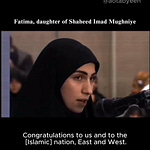About the Film
This is an epic film about the life of Martyr Dr. Mustafa Chamran
It an an overview of two days - 48 hours - in the life of the Martyr Doctor Mostafa Chamran.
Plot
The plot for the film is as follows:
Six months after the victory of the Islamic Revolution in Iran, there was some news that the so-called ‘Democratic Party of Kurdestan’ as well as the ‘Komalah’ terrorist organisation had joined forces in Kurdestan province, and we campaigning against the newly formed Islamic Revolutionary forces, and were working against the Islamic Revolution in order to create instability and sedition, with their intention being to take control of the city of Paveh in that region.
Imam Khomeini, ordered Dr Mustafa Chamran to go to the location and clear it of the terrorist forces. He had 48 hours to do this, before the city fell. This was while Chamran was the Defence Minister of the nascent Islamic Republic, from August 16 to August 17, 1979.
The film is also about the Martyr Asghar Vesali, as well as the honourable people of the city of Paveh, who gave a valiant resistance against the terrorists of ‘Komalah’ and the ‘Democratic Party of Kurdistan’.
Cast
The film has an excellent cast:
Fariborz Arabnia as Mustafa Chamran
Saeed Rad as Valiollah Fallahi
Babak Hamidian as Asgher Vesali
Merila Zarei as Hanna
Mehdi Soltani as Doctor Enayati
As well as Payam Laryan, Esmail Soltanian, Amir Reza Delavari, Khosrow Shahraz and Hasan Jamshidi
And many other excellent actors and actresses from Iranian Cinema.
The film is directed by Ebrahim Hatamikia, and produced by Mahdi Karimi. Music for the film is by Fardin Khalatbari.
Release
The film was released on February 24, 2014
The film above is in Farsi primarily and is fully subtitled into English.
The name of the film ‘Che’ (چ) is from the seventh letter in the Farsi alphabet, which is also the first letter in the family name of Dr Mustafa Chamran.
Awards
The film was the winner of two Crystal Simorgh awards at the Fajr International Film Festival.
The Martyr, Dr Mustafa Chamran
The Martyr Dr. Mustafa Chamran, was a commander of the eight year imposed war on Iran, commonly known as the Iran-Iraq War.
Martyr Chamran was born initially into a religious family, and received religious education from both Ayatullah Taleghani and Ayatullah Morteza Motahhari, and he initially graduated from the University of Tehran with a Bachelors degree in Electromechanics.
He moved to the United States of America in the 1950s for higher education, where he received a Masters degree from Texas A&M University. He then went onto the University of California in Berkley, and obtained his Ph.D in Electrical Engineering and Plasma Physics in 1963.
In his book, ‘Self-construction and development’, Martyr Chamran says that he had been hired as a research staff scientist at Bell Laboratories and NASA’s Jet Propulsion Laboratory in the 1960s.
In 1971, Chamran left the US for Lebanon, and joined that camps of both the nascent Palestine Liberation Organisation (PLO) as well as the Amal Movement.
He was an active Islamic Revolutionary across the West Asia and North Africa region, having organised resistance movements and groups in Algeria, Egypt, Syria.
During the Lebanon Civil War in the 1970s, he worked closely with Imam Musa as-Sadr, the founder of the Amal Movement, and was at times referred to as the ‘right-hand’ of Imam Musa as-Sadr.
As the Islamic Revolution took place in Iran in 1979, he chose to return to Iran. he served as the Deputy Prime Minister in the cabinet of Mehdi Bazargan.
He led the campaign against the Kurdish and ‘Komalah’ terrorists - which is depicted in this film - and later he served as the Minister of Defence from September 1979 to 1980.
In March of 1980, he was elected to the Majlis (Parliament) of Iran as a representative of Tehran, and in May 1980, he was named Imam Khomeini’s representative to the Supreme Council of National Defense.
He was martyred in Dehlavieh, which is a village in the district of Khuzestan in South-Western Iran, close to the border with Iraq as the Sacred Defence (Iran-Iraq War) raging.
Imam Khomeini proclaimed Martyr Mustafa Chamran as a “Proud Commander of Islam”, and he enjoys the status of a true hero.
Many buildings, highways and streets, in both Iran and Lebanon, are named after him.
Martyr Mustafa Chamran is buried in the famous graveyard in Tehran, Islamic Republic of Iran, known as Behesht-e-Zahra.
The Martyr, Asghar Vesali
The Martyr Asghar Vesali was a leader in the Islamic Revolutionary Guard Corp in the early years of the Islamic Revolution. He was appointed a leader in the Revolutionary Guards during the Iran-Iraq war.
On November 19, 1980, which coincided with the day of Ashura, the 10th of the month of Muharram in the Islamic Lunar Hijrah calendar, he received a serious head wound while making an honourable resistance and fighting against anti-revolutionary terrorist groups in the West of Iran, near an area known as Gilan-e-Gharb.
He was immediately taken for emergency surgery following his injury, but due to the nature of the injury, he ascended after the surgery and attained martyrdom.
Vesali is buried in the famous graveyard in Tehran, Islamic Republic of Iran, known as Behesht-e-Zahra.




